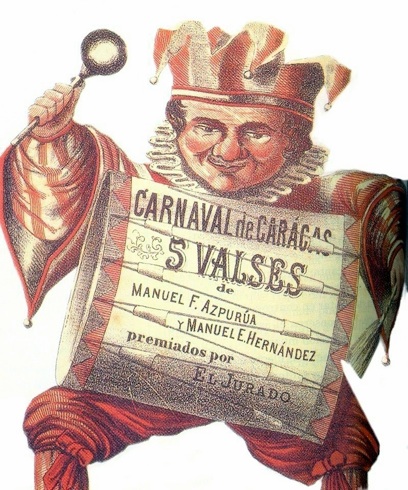Numerology

Five Venezuelan waltzes
Five Venezuelan waltzes (seriously, they’re a thing), by the Italo-Venezuelan composer Antonio Lauro. There will be a special quiz after listening to these pieces.
I’ve longed enjoyed playing Lauro’s “Registro,” which is pretty magnificent—very playable, but with passages that sound and look difficult, and very enjoyable to play, as well. As an undergrad, I learned two other pieces by Lauro, but not quite to my satisfaction, two “Venezuelan waltzes.” As it turns out, virtually all Lauro wrote were Venezuelan waltzes—like Villa-Lobos, fusing the high Western art music tradition (the waltz) and his indigenous popular music, the path to success for late romantic composers. Lauro came to the game a little late, compared to Villa Lobos, and worked almost exclusively on small, jewel-like pieces. He wrote a large number of these waltzes, initially simply assigning each one a number, but later substituting friends and family members, often using their nicknames, such as “la gatica” (the kitten), or “il negrito” (Blackie), for those numbers. I read a biography of Antonio Lauro in Spanish this year, and the names are a baffling series of partial abbreviations, repetitions and nicknames—if you’ve ever read García Márquez’s great One Hundred Years of Solitude (Cien años de soledad), with its incredible proliferation of José Arcadio Buendías, this was not dissimilar, with a ever-increasing number of Antonio Lauros, Andreinas, and Armidas.
“La negra” (black woman) was the nickname for Lauro’s neice. Essentially all of these pieces follow the same structure, A A’ B B’ A’, where the A’ and B’ feature some slight variations, particularly in the ending. As is typically true in the faster pieces, the B section changes mood fairly significantly and is a little more sedate.
“Andreina” was the name of one of Lauro’s sisters (although not the mother of “la negra”—we’ll get to her in a moment). This is perhaps the most impressive sounding of these pieces (its nickname among Lauro’s friends was “el chopiano,” “The Chopinesque”), and is certainly the hardest—and the one I’ve been working on since I was an undergraduate. Its most distinctive feature is its strangely ragtime B section.
“La gatica” (the kitten) was Lauro’s nickname for his wife, Maria Luisa, and this piece was intended to be played alongside “El negrito” (the next piece), Lauro’s nickname for his youngest son, Luis Augusto. (Maria Luisa also got a waltz under her proper name, and all of Lauro’s children got their own waltzes, including his eldest son, Leonardo, or “el niño.”) I didn’t know that until after I recorded them and decided to place them next to each other—and I only just learned that Lauro intended them to be played together, and in precisely that order. In any case, “La gatica” is a very fast and lively piece with an extremely South American sound. Unlike “Andreina” and “La negra,” however, the B section in “La gatica” remains at essentially the same activity tempo and a largely similar mood. It was originally written for Luro’s students in 1955. “El negrito” is a somewhat slower piece—I found quite different tempo markings for it on different scores, and chose to play it slower, partly to give the five waltzes some variation in tempo. According to my Lauro book, the three chromatic notes that begin the A section are intended to express “el amor paterno” (fatherly love). Okay, then.
Finally, we come the “Armida,” Lauro’s other sister and the mother of “la negra” (who needed a nickname, since she was also named Armida). Antonio Lauro’s father (also named Antonio Lauro) had also been a musician, and he had also composed a waltz entitled “Armida.” This piece is, without a doubt, the favorite of everyone in the family—Lilya keeps humming it for hours after I’ve been practicing. Perhaps it’s the initial octave passage, or the ostinato rhythm, or the dramatic transition out of the second B and back into the final A. Regardless, a piece that will hopefully stay in my repertoire for years to come.
OK—ready for your quiz? Here it is: one of these five pieces is technically not a waltz. Which one, and why?
Saturday, August 24, 2013


Antonio Lauro and his sister Armida